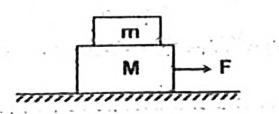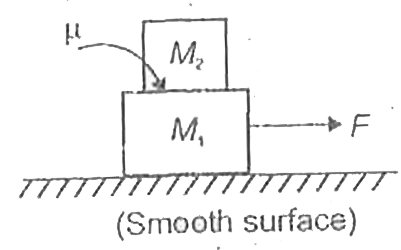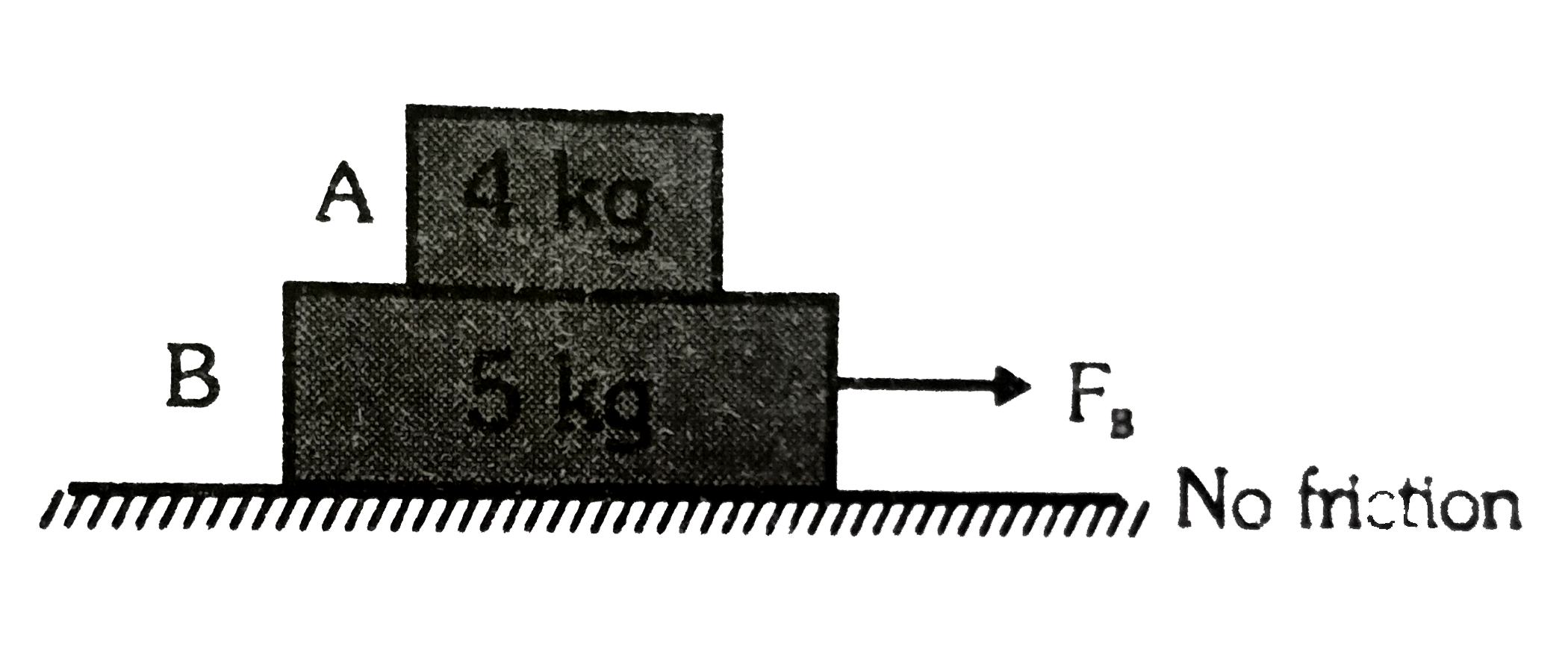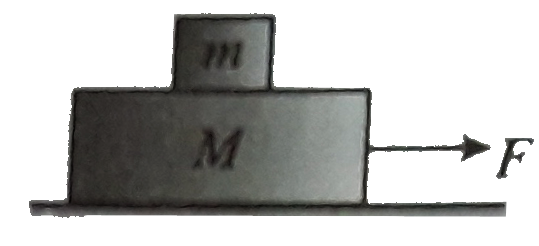A block of mass 4 kg is placed on another block B of mass 5 kg, and the block B rests on a smooth horizontal table. If the maximum force that can be applied on A so that both the blocks move together is 12 N, the maximum force that can be applied on B for the blocks to move together will be:
Here M1=4kgandM2=5kg, The limiting friction between the blocks, flim=12N.
Let F be the force applied on the block B.
The acceleration produced in the system a=FM1+M2=F4+5m/s2=F9m/s2
Because of this acceleration, the block A experiences a pseudo force of magnitude Fpseudo=M1a=4×F9, As block A move together with B, ∴Fpseudo≤flim
For maximum value of applied force
Fpseudo=flimor4F9=12(or)F=27N
Thus acceleration of blocks=274+5=3m/s2
Similar Questions
A block A of mass 4 kg is placed on another block B of mass 5 kg , and the block B rests on a smooth horizontal table . For sliding block A on B , a horizontal force of 12 N is required to be applied on A How much maximum force can be applied on B so that both A and B move togrther ? Also find out acceleration produced by this force .
View SolutionA block A of mass 4 kg is placed on another block B of mass 5 kg , and the block B rests on a smooth horizontal table . For sliding block A on B , a horizontal force of 12 N is required to be applied on A How much maximum force can be applied on B so that both A and B move togrther ? Also find out acceleration produced by this force .
View Solution
Knowledge Check
- Question 1 - Select One
A block A of mass 4 kg is placed on another block B of mass 5 kg and the block rests on a smooth horizontal table. For sliding the block A on B, a horizontal force of 12 N is required to be applied on it. The maximum horizontal force that can be applied on B so that both A and B move together and the acceleration produced by this force is
 A25 N, 5 m/s2B27 N, 3 m/s2C30 N, 8 m/s2Dcannot be calculated from the given data.
A25 N, 5 m/s2B27 N, 3 m/s2C30 N, 8 m/s2Dcannot be calculated from the given data.
What is the maximum value of force, so that both the blocks will move together ?
View SolutionA block of mass m is placed on another block of mass M lying on a smooth horizontal surface as shown in the figure. The co-efficient of friction between the blocks is μ. Find the maximum horizontal force F (in Newton) that can be applied to the block M so that the blocks together with same acceleration? (M=3kg,m=2kg,μ=0.1,g=10m/s2)
 View Solution
View SolutionA 4 kg blocks A is placed on the top of 8 kg block B which rests on a smooth table .A just slips on B when a force of 12 N is applied on B to make Both A and B move together is (4x) N Find the value of x.
View SolutionThe maximum value of F which can be applied on the system shown in figure so that both blocks move together with same acceleration is
 View Solution
View Solution12N of force required to be applied on A to slip on B. Find the maximum horizontal force F to be applied on B so that A and B moves together.
 View Solution
View SolutionA block of massm is placed on another block of mass M which itself is lying on a horizontal surface .The coefficient of friction between two blocks is μ1and that between the block of mass M and horizontal surfece is μ2 What maximum horizontal force can be applied to the lower block move without separation?
 View Solution
View SolutionA 4 kg block A is placed on the top of 8 kg block B which rests on a smooth table.

A just slips on B when a force of 12 N is applied on A. Then the maximum horizontal force F applied on B to make both A and B move together, isView Solution
